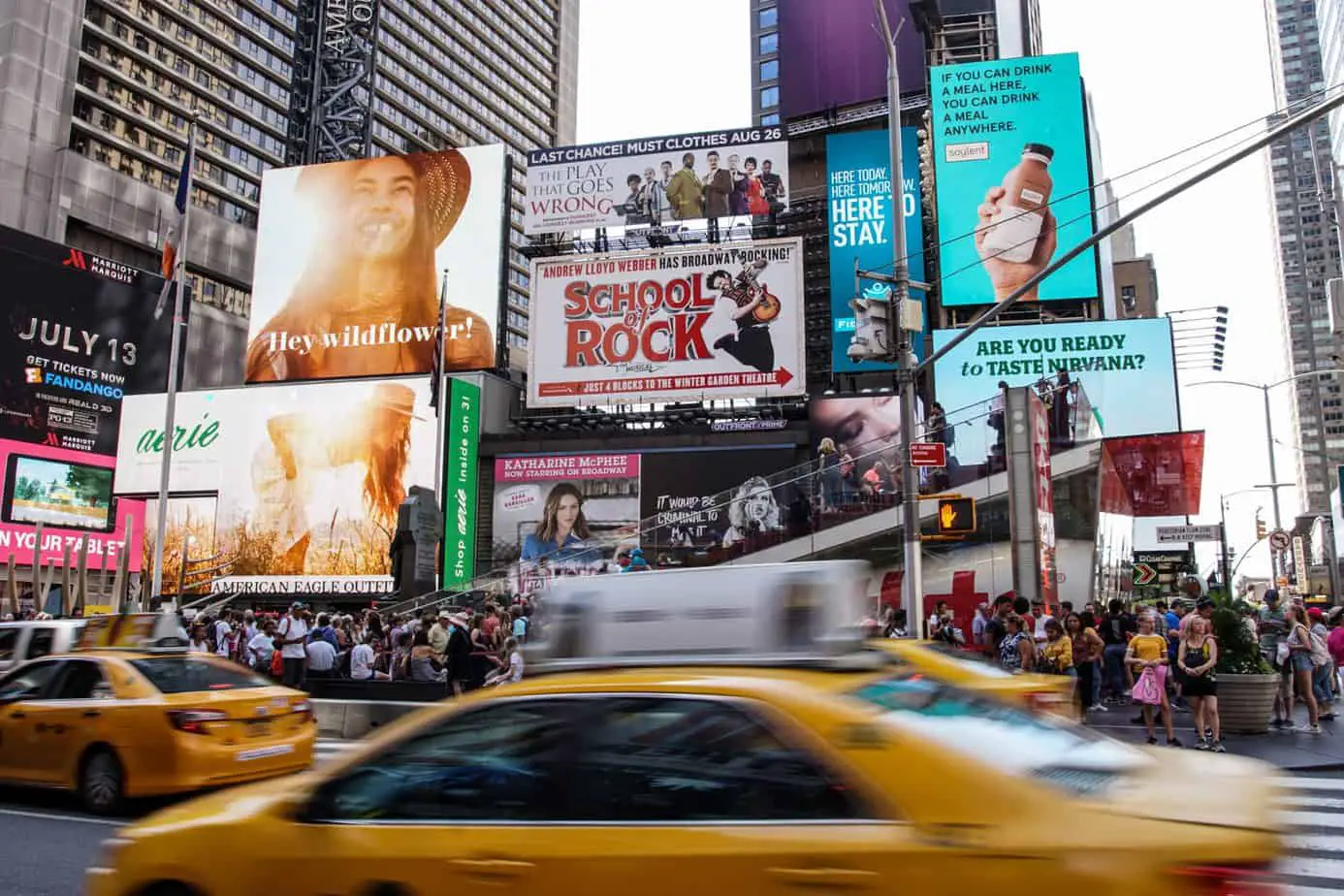This post contains affiliate links.
While researching marketing techniques, you have probably heard of signage marketing. What exactly is signage marketing? Why would it help your marketing strategy?
Signage marketing is the use of visual aids, often large and artistic, known as signs. These signs are used to communicate to the viewer.
- Inform and Instruct
- Convince of a Need
- Influence a Point of View
Let’s explore what signage marketing is in more depth and why this form of marketing is the most important form used.
This is Signage Marketing Defined
Signage marketing is the use of artistic and visual graphics to gain attention from the intended audience. These advertising aids demand the attention of the viewer. The use of these symbols directs people to something, or convinces them of a need they have that can be fulfilled.
The Purpose of Signage Marketing and How it Compels the Viewer
Signs are used to influence us. Whether digital or traditional, the artistic graphics and words compel the viewer to take action. The more memorable the sign is the more likely we are to remember the content and seek out the product or service it offers.
Our emotions, needs, and wants can be manipulated by a picture and a few words. This is why signage marketing works.
The Psychological Play of Signage Marketing

Signs, no matter the size, beckon to our subconscious minds. The boredom of the open road is suddenly broken up with symbols of civilization and the known comforts we’ve left at home.
Do I need that new car? Probably not, but it looks more appealing than what I am driving now. If we see a sign for fuel, we will check our gas gauge; if they add “Next Gas 250 miles,” there's an urgency to fill up the tank.
Signs advertising food or a restaurant can suddenly remind or convince us we are hungry. And those signs with the sleepy teddy bear climbing into the comfy bed beckon the weary traveler to rest with the comforts of home.
Signs are used to Inform the Viewer
These types of visual aids give instructions the viewer may need.
Informational signs are found everywhere:
- City streets
- Forest trails
- Computers
- Highways
Such visual aids tell us how to get to certain places and rules that are to be followed on our journey. They are meant to influence our actions and broaden our knowledge.
Our highways have signs stating speed limits and may have a sign stating the speed limit is enforced by aircraft or radar. We see this sign and check our speedometer and the skyline.
Businesses use informational signs to direct their customers to their stores. Informational signs are also used to educate while announcing rules and regulations.
Signage Marketing is used to Convince the Viewer they are in need
Our emotions are constantly being pulled by the visual stimuli around us. Good signage marketing will utilize this to the fullest advantage.
The sign will convince the patron that they have a need that the product advertised on the sign can fulfill. This visual aid will speak to the viewer and direct the viewer to the product or services being offered and why that product or service is better than the competition.
A sign is like poetry. It needs to grasp the imagination and emotions of the viewer. It must convey the need and answer in as few words as possible.
- What you are offering
- Why it is best
- Where to find it
The sign needs to influence the audience. You know what you are offering, and why it is the best. Now, you need to know who is in need of your product or service, find your audience, and influence them to seek you out. With a great picture and a few carefully chosen words, signage marketing can do exactly this.
What are the Choices of Signage Marketing?
There are two types of signage marketing available today, traditional and digital.
What is Traditional Signage?
Traditional signage is the use of a stationary, unchanging visual picture. This is the most widely used signage marketing technique. These signs can be of varying medium and content. They include:
- Billboards
- Mobile Billboards
- Painted Store Windows
- Banners
- Flags
- Window Decals
- A-frame Signs
The Use of Traditional Billboards and Their Purpose
Traditional billboards are huge signs often seen along highways. They usually have a photograph or a painted scene. Some billboards only have a few words.

Today we have the option of mobile billboards applied to the sides of semi truck trailers. The purpose of these signs is to entice the viewer to do something, or feel a certain way.
- Buy this
- Shop here
- Get Gas here
- Eat Here
- Sleep here
- Vote
Other Types of Traditional Signage Marketing Purposes
Other forms of traditional signage marketing are designed to alert the viewer in much the same way. These signs may be much smaller, such as a pen, and may only have a few words. These will most likely direct the viewer into the business that is advertising.
Traditional signage has worked for hundreds of years. It is low cost and easy to maintain. There's no need for an internet signal or electricity, aside from a solar panel wired to a light for nighttime visibility. Once your traditional sign is in place, you know it will be there and be seen until you decide to take it down.
Using Digital Signage Marketing
We live in the digital era, and this has come to include our signs. Today’s digital advertising consists of graphic displays with the ability to change the content from a distance. The displayed content can be fixed in place or can be animated. Another advantage of digital signage is it can be interactive.
What Options Do I Have with Digital Signage?
There are many options when it comes to the use of electronic, or digital marketing. They include:
- Basic LED Banner Signs
- Digital Media Players
- Custom Design Led Signs
- Digital Billboards
- Digital Writing Boards
- Mobile Digital Billboards
- Interactive Digital SIgnage
Banners, media players and other LED signs are fairly basic. They are electronic, and the user can often change light colors, and written content from installed apps on their phone or computer.
Custom-designed LED signs bring in the artistic flair to basic digital signs. The hand-sketched artwork is brought to life in brilliant light and color.
Digital billboards and mobile digital billboards are giant computer screens that allow the advertising content to be displayed to commuters, pedestrians, and consumers.
The content on these digital signs can be changed nearly instantaneously and from a remote location. They would require internet connection, and electricity.
Interactive digital signage is advertising via computers, smartphones, and more where the viewer is readily interacting with the advertisement.
- Quizzes
- Instore shopping
- Surveys
- Videos
- Games
- Touch Screens
This type of digital signage is a good strategy because it becomes memorable for the viewer.
Issues with Digital Signage Marketing
Digital signage still needs maintenance. Even though this medium of advertising can be done remotely, external phenomena can affect the ability to see what is intended. Should there be a power outage, your signage will no longer be visible. Damaged digital signs could also prevent customers from seeing the advertisement.
Which is Better Digital or Traditional Signage?
There really is not a best choice when it comes to signage marketing. What sources you use will depend on different factors.
How much are you willing to spend? The amount you are able to or willing to spend will affect what your signage choices are and where they are displayed.
Where will your sign(s) be displayed? If your sign is going to be out on a lonely highway far from civilization, a traditional billboard would probably be more economical than a flashy digital one. However, if it will be in a high-traffic metropolitan area, an eye-catching digital sign would probably be best.
In actuality, most would probably find combining traditional and digital signage marketing to be to their best advantage.

